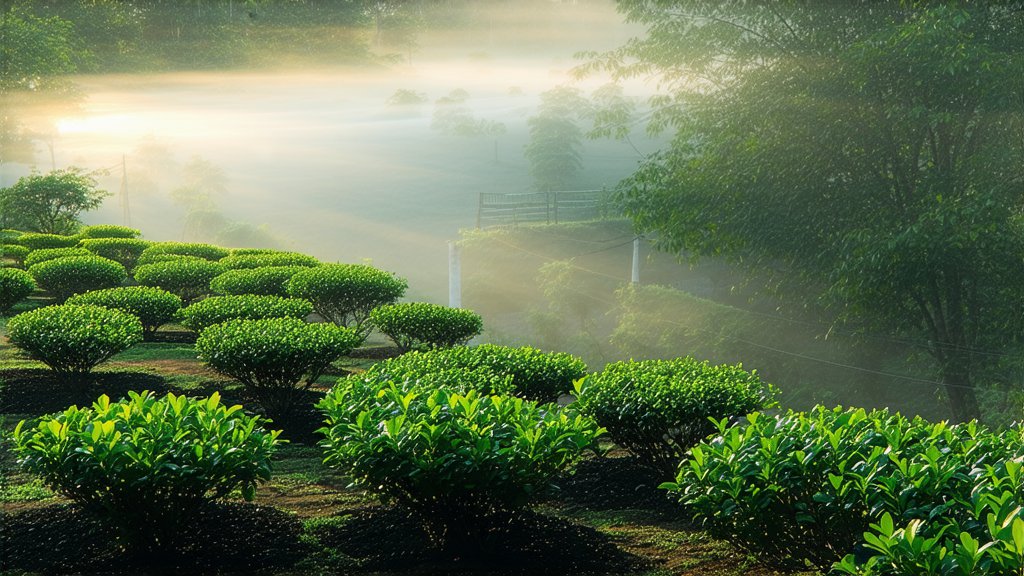
In the vast and diverse landscape of Chinese tea culture, few varieties capture the imagination and senses quite like Keemun Black Tea. Originating from the picturesque hills of Qimen County in Anhui Province, this exquisite tea has a storied history that spans centuries, intertwining with the cultural and economic fabric of China. In this article, we delve into the rich heritage, intricate craftsmanship, and distinctive characteristics of Keemun Black Tea, offering an immersive journey for international readers to discover its allure.
Historical Roots and Cultural Significance
The origins of Keemun Black Tea can be traced back to the Tang Dynasty (618-907 AD), though it gained prominence during the Qing Dynasty (1644-1912). Qimen County, nestled in the southern part of Anhui Province, provided an ideal environment for tea cultivation, with its fertile soil, favorable climate, and abundant rainfall. Over time, Keemun became synonymous with quality and elegance, earning a prestigious reputation both domestically and internationally.
During the 19th century, as global trade expanded, Keemun Black Tea found its way to Europe and other parts of the world. It played a significant role in shaping the British afternoon tea tradition, becoming one of the most sought-after teas in Western markets. The name "Keemun" itself is derived from the Pinyin transliteration of Qimen, reflecting its deep roots in the region of its birth.
Varieties and Classification
Keemun Black Tea encompasses several distinct grades and types, each with its unique flavor profile and appearance. The primary classifications include:
-
Huang Shan Mao Feng (Yellow Mountain Fur Peak): This premium grade features slender, twisted leaves with a golden tip, reminiscent of fur peaks. It boasts a delicate aroma and a smooth, mellow taste.
-
Gong Mei (Tribute Eyebrow): Known for its fine, wiry leaves and slightly curved shape, Gong Mei offers a balanced blend of sweetness and astringency, making it a favorite among connoisseurs.
-
Zhen Mei (Premium Eyebrow): Slightly less refined than Gong Mei, Zhen Mei still delivers a robust flavor with hints of malt and fruitiness, appealing to those who prefer a stronger cup.
Each variety undergoes rigorous selection processes to ensure only the finest leaves make it into the final product, preserving the integrity and reputation of Keemun Black Tea.
Artistry in Craftsmanship
The production of Keemun Black Tea is a testament to the artistry and precision involved in traditional Chinese tea making. It follows a meticulous process that includes withering, rolling, fermenting, drying, and sorting. Let's explore these steps in detail:
-
Withering: Freshly picked tea leaves are spread out on bamboo mats under shade or in a controlled environment to reduce moisture content gradually. This step helps soften the leaves and initiates enzymatic activity.
-
Rolling: The withered leaves are then rolled either by hand or using machines to break down cell walls, releasing juices that will later contribute to the tea's flavor and color. Rolling also shapes the leaves into their characteristic forms.
-
Fermenting: Rolled leaves are spread out again to allow oxidation, a crucial stage where polyphenols react with oxygen, transforming the green leaves into dark brown or black. This process develops the complex flavors and aromas associated with black tea.
-
Drying: To halt fermentation and fix the flavors, the leaves undergo high-temperature drying. This step also reduces moisture content further, ensuring the tea's longevity.
-
Sorting and Grading: Finally, the dried tea is sorted according to size, shape, and quality. Only the best leaves are selected for higher-grade Keemun Black Tea, ensuring consistency and excellence.
The Art of Tasting Keemun Black Tea
Appreciating Keemun Black Tea goes beyond simply drinking; it involves engaging all the senses in a ritualistic manner. Here's how to savor this exquisite beverage properly:
-
Warming the Teapot and Cups: Begin by rinsing your teapot and cups with hot water to maintain the optimal temperature for brewing and enhance the tea's aroma.
-
Measuring the Leaves: Use approximately 3 grams of loose leaf tea per 200 milliliters of water. Adjust according to personal preference for stronger or milder flavors.
-
Water Temperature: Boil fresh water and let it cool slightly to around 90-95°C (194-203°F) before pouring over the茶叶leaves. Using boiling water directly can scorch the delicate leaves.
-
Steeping Time: For the first infusion, steep for about 2-3 minutes. Subsequent infusions can be longer, typically up to 5 minutes each, depending on desired strength.
-
Observing the Liquor: As the tea steeps, observe the color transformation from a pale amber to a deep reddish-brown hue, indicative of the tea's richness.
-
Aroma and Flavor: Before taking your first sip, inhale deeply to appreciate the nuanced aroma, which may include notes of orchid, caramel, and a subtle smokiness. Sip slowly, letting the tea coat your palate fully to experience its complexity—a harmonious balance between sweetness, astringency, and a lingering aftertaste.
-
Multiple Infusions: High-quality Keemun Black Tea can be steeped multiple times, each infusion revealing different layers of flavor. Experiment with varying steeping times to find your preferred balance.
Conclusion
Keemun Black Tea stands as a shining example of China's tea legacy, embodying centuries of tradition, craftsmanship, and passion. From its historical significance in shaping global tea cultures to its meticulous production process and unparalleled tasting experience, every aspect of Keemun tells a story worth savoring. As you embark on your own journey exploring this remarkable tea, remember that each cup is not just a beverage but a connection to a rich heritage that continues to inspire and delight tea lovers worldwide.